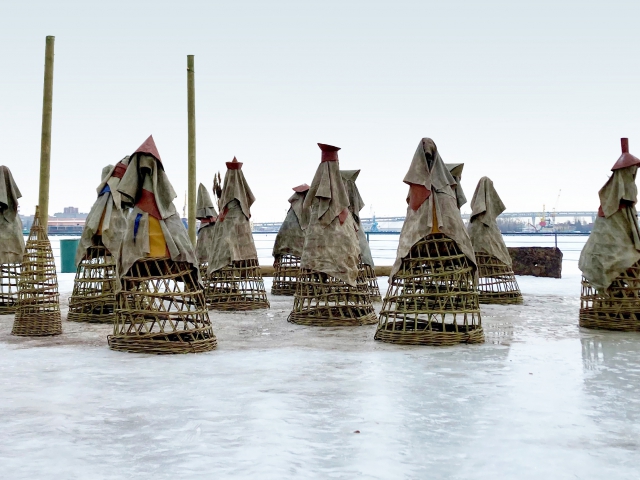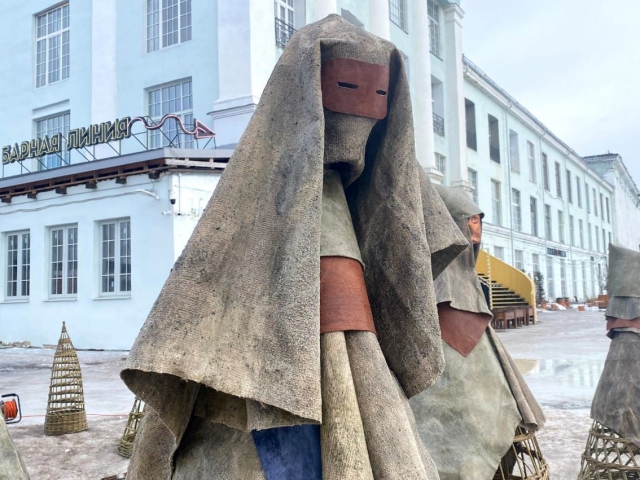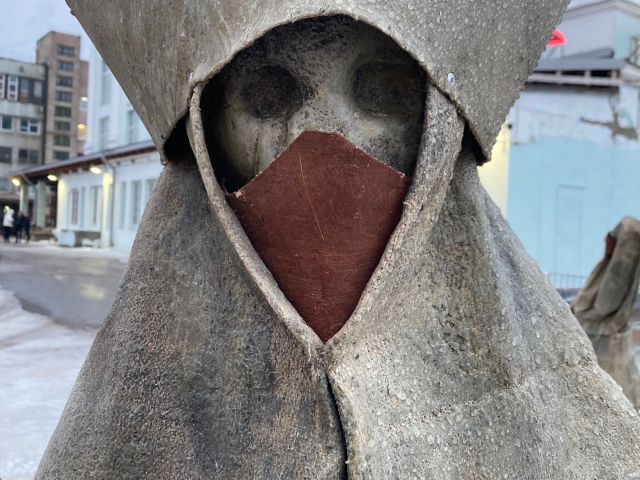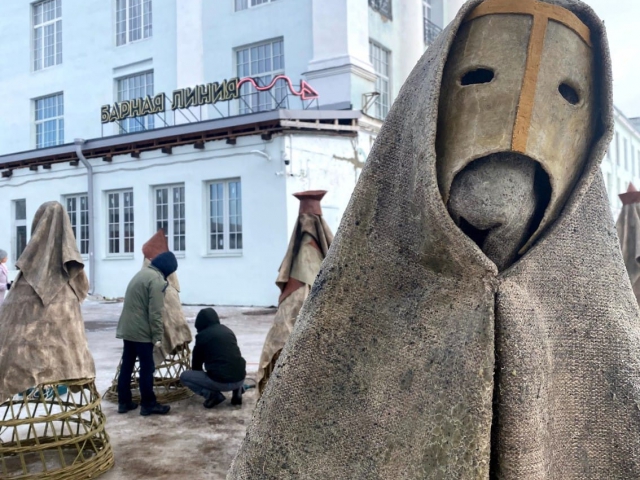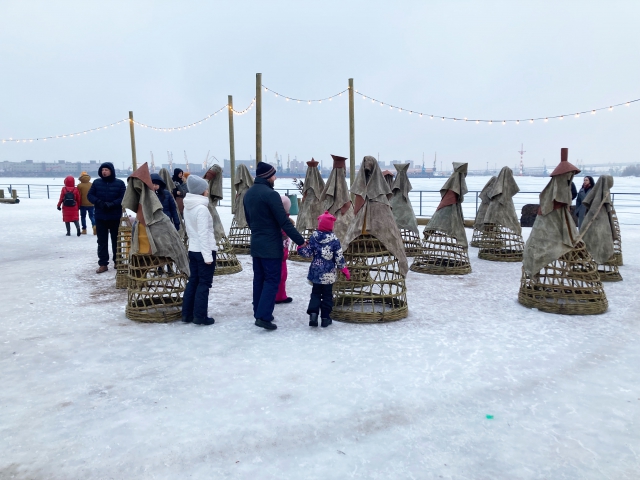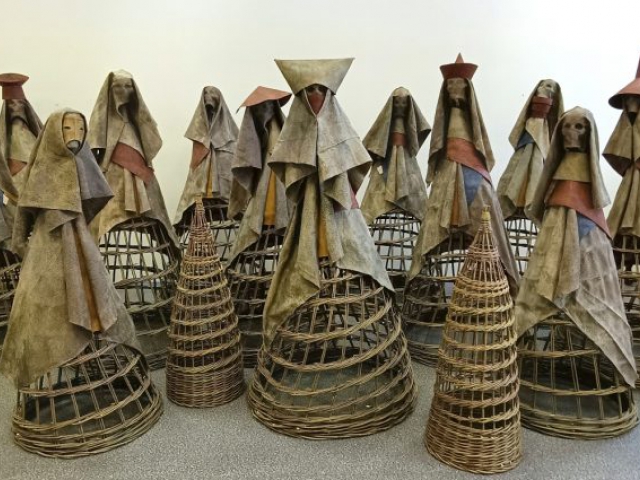- English
- Русский
ECHOES OF THE SEA. Navigating Through The Changes of Nature and Cultures
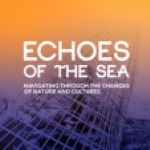
ECHOES OF THE SEA. Navigating Through The Changes of Nature and Cultures
Project initiated and realised by Nabil Ali, artist of the Essex Cultural Diversity Project (ECDP), and curated by Anna Bitkina (TOK) in partnership with The Museum of Anthropology and Ethnography (Kunstkamera) and Sevcable Port, a multifunctional public cluster at the waterfront of Vasilievsly island in St Petersburg.
Sculptural installation by Nabil Ali
in collaboration with artists Alesya Murlina and Vitalii Datchenko
Waterfront line at Sevcable Port
18.02-04.04.2022
PROJECT BOOKLET
International seminar "Art, Science and Community-led Practices to Tackle Environmental Decay"
The Museum of Anthropology and Ethnography (Kunstkamera) in St Petersburg
10.02.2022
Participants: Nabil Ali, Anna Bitkina, Angelina Davydova, Vladimir Davydov, Simon Periton, Konstantin Klokov, Sofia Urnu, Anna Ushakova, Daria Ryabchuk
Video documentation of the seminar
Project coordinator: Aleksandra Dugushina
Environmental consultant: Angelina Davydova
Exhibition project ”Echoes of the Sea” by British artist Nabil Ali draws public attention to the causes and consequences of regional environmental crises. The installation consisting of 15 sculptures reflects on shoreline erosion, namely, coastline erosion which happens due to the constant rise of water temperature and sea level as a result of industrialisation, urbanisation and consequences of climate change.
Been envisioned as a nomadic project ”Echoes of the Sea” will travel to various coastal cities at risk from rising sea levels, whose residents not only lose access to water, but also suffer from massive destruction and flooding. For the first time the sculptural installation was presented on the North Sea coast in Essex, Great Britain, in 2021. Placing the project in the context of St. Petersburg and presenting it on the embankment of a public cultural cluster “Sevcable Port” (former industrial territory) expands public awareness about biological, geological and hydrological particularities of local environmental changes and ecological rights. It also builds on the local, more relational understandings of nature, ecological history, indigenous knowledge and contemporary discourse about changes to the climate and global warming.
”Echoes of the Sea” in St. Petersburg combines its research with The Museum of Anthropology and Ethnography (Kunstkamera), the oldest museum in Russia founded by Peter the Great in St. Petersburg in the 18th century. The project rethinks the ethnographic collection, by revisiting the accumulated knowledge of the museum’s scientific department through the prism of shifts in natural environment and cultural conditions. Making an inventory of museum items that demonstrate sustainable models of coexistence and production, ”Echoes of the Sea” also challenges participating scientists and artists to incorporate them in their research work. Through the course of the project, creative and scientific thinkers are encouraged to adopt the role of public educators to “revitalise” indexed museum artefacts by integrating them into a broader knowledge framework.
In his practice Nabil Ali pays much attention to natural science. He is particularly focused on colour theory and the history of pigments, which are easily obtained from deposits throughout nature and suitable for art and decoration. Nabil Ali carefully studies the composition, texture, origin, structure, and history of the materials he uses in his works. His deep knowledge of the history of early art and its material aspects enables him to mix periods, styles and artistic traditions from different parts of the world, establishing a nonlinear historical narrative in a contemporary context. Nabil Ali also used natural materials found on the coast off the Gulf of Finland: sand, soil, seaweed, plants, beeswax from the apiaries of the town of Otradnoye on the bank of the Neva river, and blue clay, the rich deposits of which are located in the Leningrad region.
Lead image of the project: Shuhov, Innokentiy. Fisherman wickering fish trap “gimgi” (“muzzle”). The Khanty (Ostyak), Khanty-Mansiysk Autonomous District (Tobolsk province, Obdorsk region), 1914. Photosensitive layer, glass. Fragment. Collection of Peter the Great Museum of Anthropology and Ethnography (Kunstkamera) RAS. ©MAE RAS, St. Petersburg 2022



